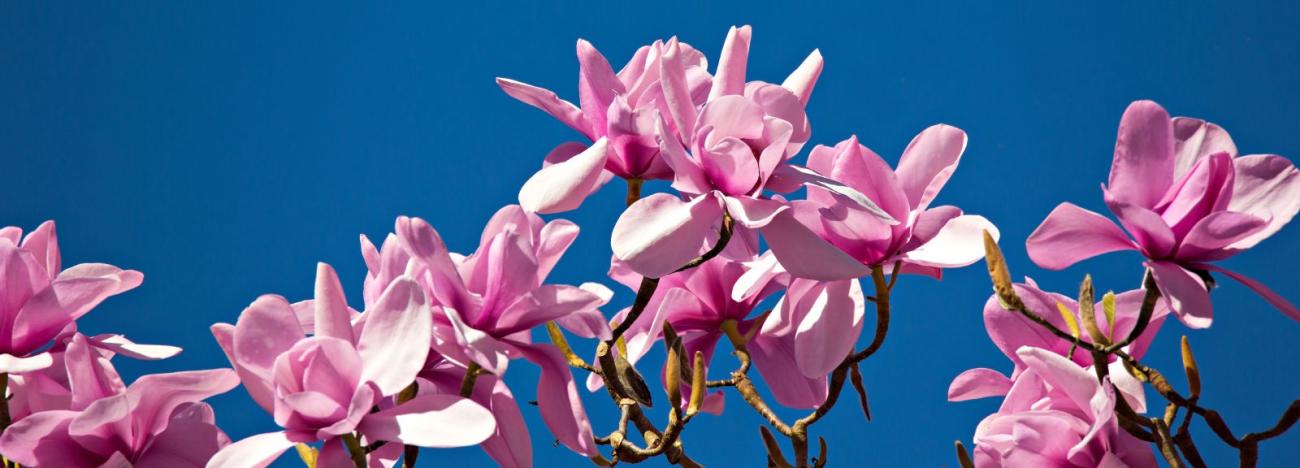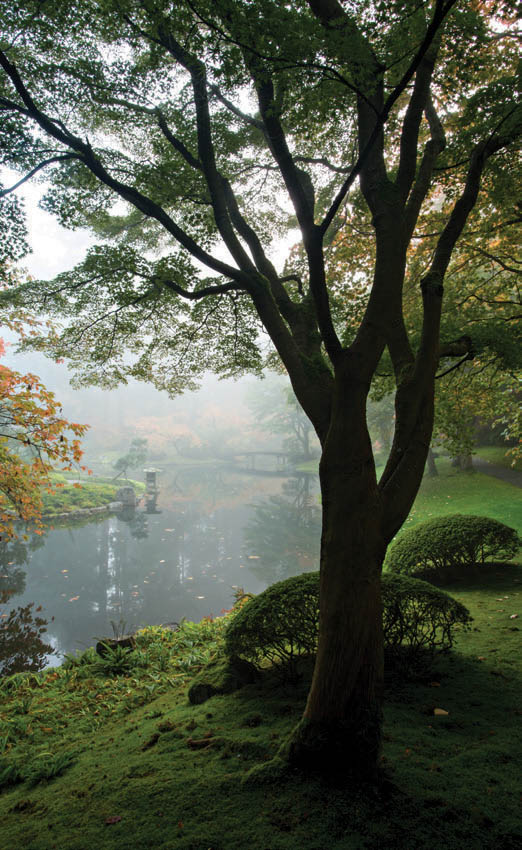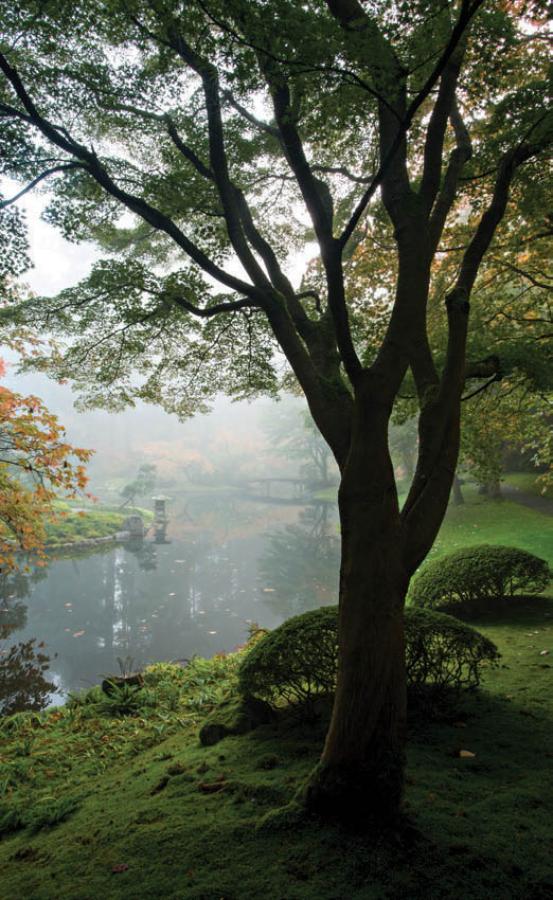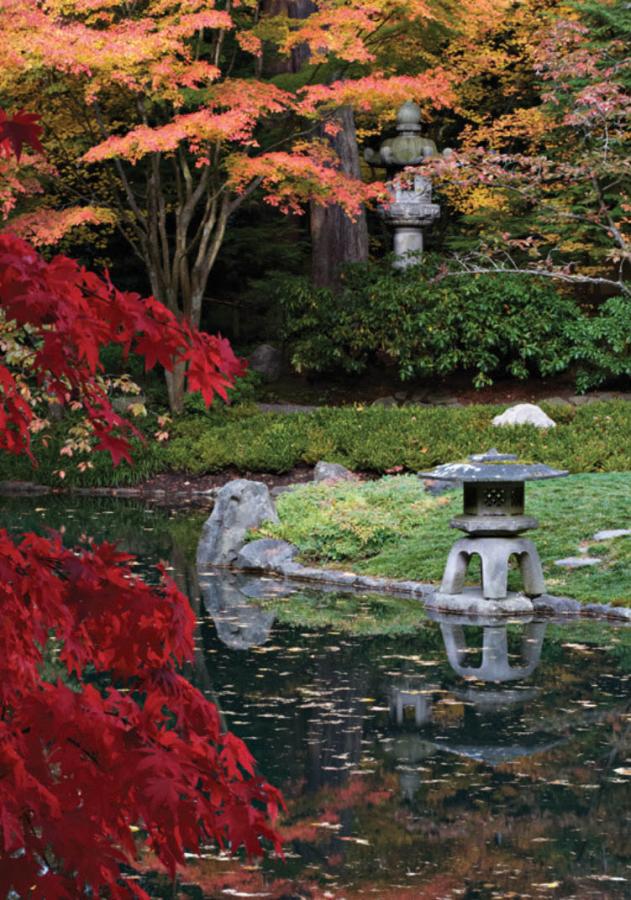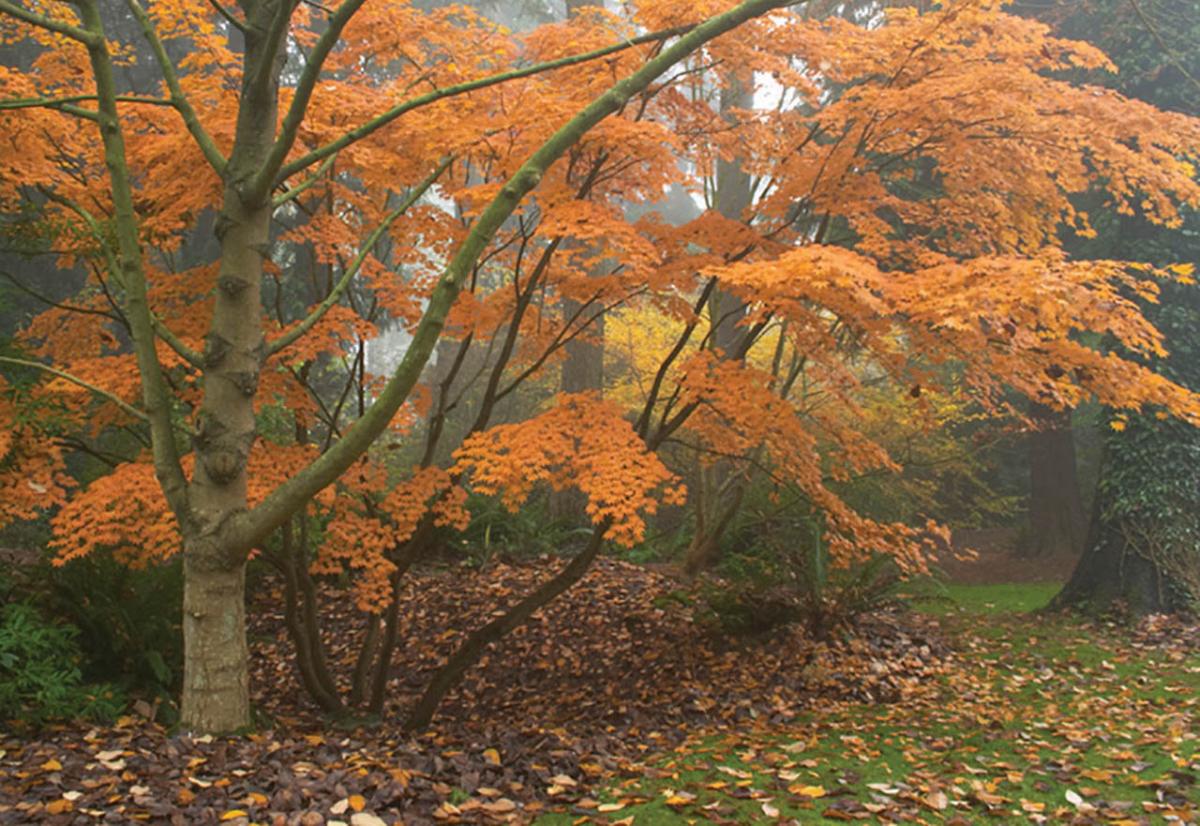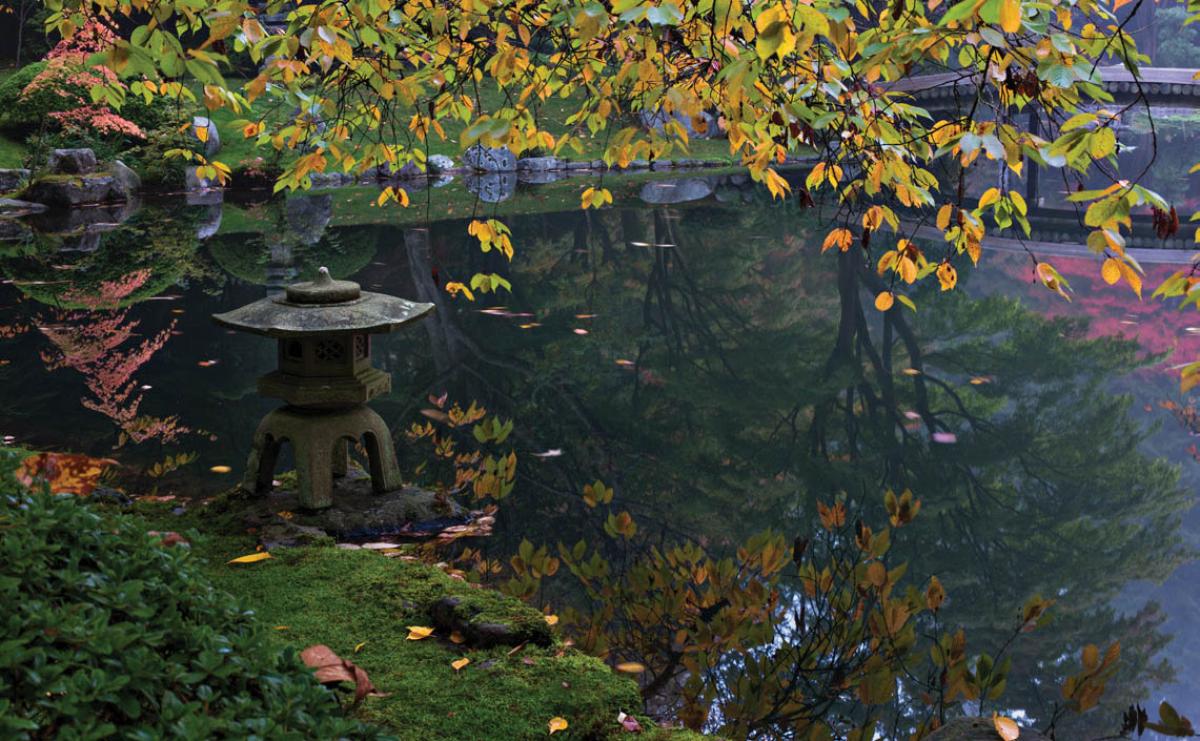Out on a Limb
A little vehicle sits in a clearing in a temperate forest in northern Vietnam. It has four propellers positioned at 90 degree angles from each other, with a camera suspended in the middle. Altogether the drone is no bigger than the top of a kitchen table. Suddenly, the propellers start whirring, and, quietly, it rises to the top of the forest canopy. The operator on the ground uses a joystick to guide the little craft, and it disappears over the treetops.
This isn’t a military operation or a spy mission or even a sporting competition. Rather, it’s a scientific project being conducted by researchers from UBC and Quebec’s Sherbrooke University to map new and existing plant species in the forest. It’s just one of many academic studies being conducted under the auspices of UBC’s Botanical Garden, which celebrates its 100th anniversary this year.
Botanical gardens have a long and elegant history in Western culture, with the first recorded gardens occurring sometime in the 14th century. Most of these were physic gardens, collections of exotic and local plants to be used for medicinal purposes. In those days, “medicinal” often meant “magical” because the cause and effect connections were not clearly understood, and physic gardens were closer to alchemy than to rigorous scientific inquiry. It wouldn’t be until large pharmaceutical organizations came along in the 19th century that the magic faded out and the science faded in.
Over the centuries physic gardens evolved to become the grand botanical gardens that grace the old cities of Europe, and form the foundation of today’s scientific focus on biodiversity, conservation and the effects of global warming, especially in university gardens like UBC’s.
Davidson was nothing if not determined. He grew the garden from a small plot west of the Old Admin building to one that covered much of the initial campus. By 1951, after his retirement, the entire campus was declared a botanical garden, and its management was transferred from the Department of Botany to the Building and Grounds service. Then, in 1966, the garden was re-established on 58 acres of land around the T-Bird stadium to allow for extensive development on campus. While some of the plantings around the university were moved to the site, many more were lost to the new buildings, parking lots and ancillary services. One of the most impressive remaining sites of the original garden is the area around the Longhouse on West Mall, which still sports a variety of trees from Davidson’s first plantings.What was to become UBC’s Botanical Garden was established in 1911 when the BC government created the position of Provincial Botanist. Scotsman John Davidson was recruited to establish a garden to collect, identify and propagate native flora in British Columbia. Davidson was assigned the grounds of Essondale Hospital (which became the Riverdale Hospital that closed in 2012) in Coquitlam, and he proceeded to gather and plant 900 specimens before his position was abolished by the provincial government in 1916 as part of wartime austerity. That year, he was invited to establish a garden at the new UBC campus site at Point Grey. Although the war had also halted development of the new campus, and UBC would have to make do with inferior premises at Fairview until 1925, Johnson went ahead in moving thousands of plants to Point Grey and became the first director of the university’s Botanical Garden. During the next hundred years, the garden would grow and prosper alongside UBC, becoming the oldest university botanical garden in Canada, and one of the largest in North America.
With the move to this permanent site, new sections opened to focus on specific types of plants and climatic regions. The David C. Lam Asian Garden is host to plantings from all over the temperate regions of Asia and features one of the most diverse assortments of maples, rhododendrons and magnolias among university collections.
Other sections include a garden featuring flora found in high altitudes, the BC Rainforest Garden, a section featuring eastern hardwoods, a physic garden that reconnects the Botanical Garden to its ancient origins, a Garry Oak meadowland and the Food Garden, one of the most popular of the specialized gardens, which grows food for distribution to kitchens in Vancouver’s Downtown Eastside.
The highlight of the Botanical Garden, and arguably its most celebrated specialty garden is the Nitobe Memorial Garden, located in the northwest corner of the campus. Considered one of the best and most authentic Japanese gardens in North America, and one of the top 10 in the world outside of Japan, it is an oasis of calm in a sea of academic storm. Spring cherry blossoms, summer irises, autumn maples and the whole thing dusted with a skiff of snow in the winter: the Nitobe is a wonder.
Patrick Lewis, the Botanical Garden’s current director, is working to capitalize on its two main functions: to communicate with and educate the public; and to use the diversity of the collection to advance research.
“Over the next few years,” he says, “we will develop new infrastructure, new interpretive materials, and new programs to make the garden more accessible and more involving to the larger community.” This increase in educational contact, he says, will reflect the garden’s research focus on biodiversity, conservation and climate change.
Many new features have appeared at the garden. A canopy walkway – the Greenheart TreeWalk – was built in 2008, and allows visitors to walk at the height of the treetops to see, literally, a bird’s-eye view of the forest. While it’s a dizzying experience for the acrophobes among us, it is an impressive view.
The Roseline Sturdy Amphitheatre and the Taylor Plaza are new outdoor venues for lectures, presentations, special events, or just a quiet spot to relax on a summer day surrounded by a profusion of greenery.
The garden also offers extensive school field trip opportunities, a telephone hotline for local gardeners, online information, a horticultural training certificate program and a Sustainable Communities Field School.
The garden’s collection includes extensive samples of maples, magnolias, mountain-ashes, snowbell trees and rhododendrons. These genera have many species in the temperate areas of the world and are, to some extent, canaries in the coal mine when it comes to climate change, development, deforestation and other events that have a negative impact on their environment.
One of the most exciting new developments (for botanical nerds, at least) is the smart phone app, “Vancouver Trees.” Developed by a team led by associate director of Horticulture and Collections Douglas Justice and research manager Daniel Mosquin, the app locates and describes commonly cultivated trees in Metro Vancouver, focusing on street plantings, but with some important collections on private lands as well. It features extensive photographs, deep descriptions of various species, and locator maps. It’s available at iPhone app stores, with an Android version to be released by the fall.
Coming soon at the garden will be interactive displays throughout the facility, more educational programs, an expanded web presence and more opportunities for exploring the garden, including Segway rentals so visitors can take their own two-wheeled tour.
But if much of the garden’s first 100 years were mostly about education and display, the second 100 will focus on its more vital role: collecting, analysing and conserving the flora of some of the world’s most endangered environments. Research has always been the heart and soul of the garden, with multi-discipline – and multi-university – collaborations at the forefront of its programs into the next century.
The Botanical Garden is a department within the Faculty of Science, and as such has a mandate to expand our knowledge of the genesis, propagation, protection and sustainability of a vast diversity of plant life. The university’s Centre for Plant Research, which is affiliated with the garden, conducts research into topics such as plant biodiversity, evolutionary genomics, hybridization, gene duplication and the effects of invasive species on native plants.
The garden’s collection includes extensive samples of maples, magnolias, mountain-ashes, snowbell trees and rhododendrons. These genera have many species in the temperate areas of the world and are, to some extent, canaries in the coal mine when it comes to climate change, development, deforestation and other events that have a negative impact on their environment. Researchers collect samples from around the world to create living (and reproducible) stores of endangered species. For example, Acer pentaphyllum, or five-lobe maple, is extremely rare in the wild, with fewer than 140 individuals left. The garden has a collection of this species, which it has cultivated, and conducts research to see how well it can survive in different climates. Magnolias, as well, are in trouble with more than half of the species under threat in the wild. The drone project is being conducted in the temperate forests of northern Vietnam, where logging, farming and encroaching civilization are stripping forests at an alarming rate. These forests are extremely biodiverse, with magnolias and other genera under particular threat. The garden is collaborating with other institutions to develop a catalog of flora in areas like this, collecting samples of seeds and living material for research and generation. As well, new species of magnolia have been discovered, and the garden hopes to obtain some of these and begin a cultivation program.
Another intriguing project involves ornamental cherries in the Lower Mainland. These ornamentals, mostly imported from Asia, have been part of the west coast urban flora since the earliest days of the city. The vast majority of the trees we see on our streets today are clones of the original plants (ie, grown from clippings or grafted onto healthy root stock), because this particular genus of tree is highly subject to disease and the importation of plants from Asia is now banned. Many of these rare specimens are, in fact, diseased, and many are just old and unhealthy. Douglas Justice is working with the Vancouver Parks Board, the BCIT Biotechnology program and the Cherry Blossom Festival to collect and propagate samples of the plants with an eye to saving these trees for future planting. In some cases, there are only one or two individuals left from specific cultivars.
One of the big projects currently underway at the garden is to increase the area under irrigation and effectively double the collection area where cultivars of endangered species – such as cherries, magnolias and maples – can be grown and observed. Last summer the collection area was itself threatened because of the unusual drought in the Lower Mainland, putting many endangered species at risk.
The garden publishes a biennial Index Seminum – a list of seeds collected in the year – and offers these seeds for exchange with other gardens and scientific institutions. As well, the garden is part of the North American Plant Collections Consortium, which maintains collection standards and helps in the distribution of seeds for research. The Belgium-based Franklinia Foundation has supported the garden since 2002 to conduct collection and conservation research into at-risk trees including maples and magnolias in Vietnam and China. Working with Asian university partners, this work increases understanding of the biodiversity of the region, and helps illuminate concerns that might impact forest health. It is in this area that the drones come into play, accessing and collecting specimens from an otherwise inaccessible forest canopy.
Closer to home, the garden is involved with the Pink Mountain project in the north east corner of BC. Pink Mountain is known for its cache of marine fossils from the Mesozoic Era, but also because its flora differs significantly from nearby areas. Researchers collect seeds and specimens and set up monitoring protocols for long‑term analysis on the effects of climate change in the region. The biodiversity of this area is unique and there are efforts to turn it into an ecological reserve.
The garden is a member of the Canadensys project, and its researchers make important contributions to the international effort to register DNA sequences of various plant species. As well, the garden’s volunteer organization, FOGs, spearheads a 20-year project to study the seasonal cycles of the magnolia collection to monitor the effects of climate change.
Ultimately, facilities like the UBC Botanical Garden have evolved into essential depositories not only of knowledge, but of a vanishing part of our world. As our climate shifts, many families of plants will become first endangered, then rare, then extinct. Without these collections with their depth of research and knowledge there would be no chance of introducing old species into new environments, or of saving those on the brink of disaster. In this way, the projects undertaken by the garden make them a vital part of UBC’s research contribution to our world, and put it on the map as one of the best of its kind.
A drone flying above the Botanical Garden at any time of the year would show that it’s one of the most beautiful facilities on campus. What it might not show is that it’s also one of the most dynamic. For more information on the garden, visit www.botanicalgarden.ubc.ca.
On May 28, 2016 there will be complimentary admission to the UBC Botanical Garden, including the Nitobe Memorial Garden, as part of a special event for alumni called UBC100: What’s Next? Find out more about available activities and register at www.alumni.ubc.ca/whatsnext/ (Please note that admission to the garden requires pre-registration.)
Official Alumni Association Plant
One of the Botanical Garden’s functions has been to produce cultivars that can be marketed commercially at local horticultural outlets. One of these is the ‘Purple Haze,’ or shrubby penstemon. This was introduced as the Alumni Association’s Diamond Jubilee plant in 1992 to celebrate the 75th anniversary of the founding of the Association. As the announcement in the spring 1992 edition of the Alumni Chronicle said, ‘Purple Haze’ “forms a solid mound of colour for several weeks and is excellent for cascading over rock walls on well drained, sunny banks and in alpine gardens.” Contact your local nursery to find out where to get this plant.
FOGs: Friends of the Garden
The spring 1976 edition of the Alumni Chronicle contained an announcement that started, “Wanted: Alumni with green thumbs or wishing to cultivate same...” and invited them to call the Botanical Garden. Seven alumni responded, and the FOGs were born. The garden, under then director Dr. Roy Taylor, was poised to expand both its offerings and its educational component and needed volunteers to seed the programs. With an upper limit membership of 160, the FOGs have been a constant source of support, direction and funding.
FOGs help organize and operate the annual Apple Festival, one of the garden’s most popular public activities. The first festival in 1991 attracted under 1,000 apple lovers, featured 26 varieties on sale, and sold 3,700 pounds. The 2015 Apple Festival attracted 14,000 people over two days, featured 69 varieties, and sold 37,000 pounds of apples.
























